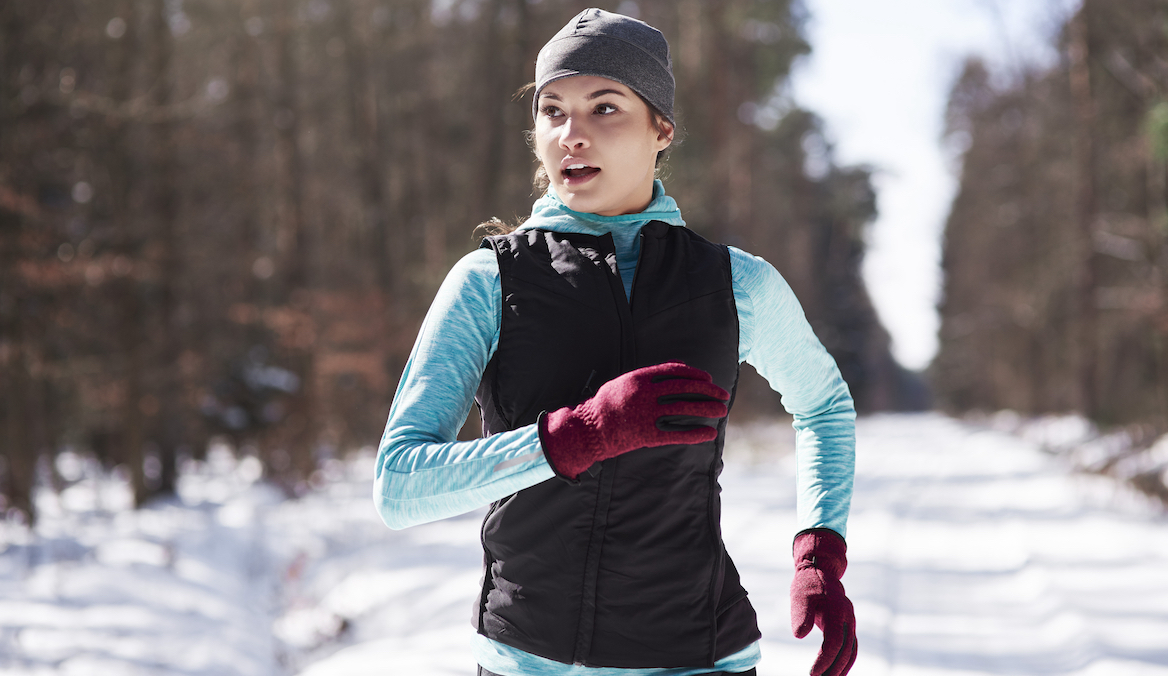Do you love running in the winter but hate how cold your hands get? With the right pair of running gloves, you can keep your hands toasty warm while enjoying all the health benefits that come from running outdoors.
In this guide, we’ll help you find the perfect set of gloves for your winter runs.
When running in the cold, it’s important to keep your hands warm and protected from the elements. Keeping your hands warm can help improve performance and reduce potential for injury. The right pair of running gloves can provide warmth, protection, and comfort for your hands as you go about your run.
This guide will provide you with an overview on everything you need to know about gloves for running, from how to choose the right pair to tips on taking care of them after each use. It will also provide information on features like venting, insulation materials, and breathability that you should consider when shopping for a pair of running gloves.
Whether it’s winter or cooler seasons in general, having the right gear is essential if you are going to get out there and stay comfortable while pushing yourself as far as possible!
Explanation of why it is important to keep hands warm while running
Keeping your hands warm while running is essential for a number of reasons. For starters, it will help you maintain a comfortable temperature, allowing you to run for a longer period of time without feeling uncomfortable or lethargic. Additionally, running gloves can provide extra grip on the terrain and protect your hands from the cold, preventing the potential for cold-related injuries such as frostbite or hypothermia.
In addition to keeping your hands warm, they also help protect them from blisters and callouses caused by excessive friction created when your hands rub against cold surfaces like metal rails or tree branches. Finally, depending on the type of gloves you wear, they may also provide additional cushioning to reduce vibration and shock in the hand when running over rough surfaces like rocks or gravel.
Choosing the Right Running Gloves
There are many factors to consider when selecting the right pair of running gloves. Depending on the climate in which you will be running, the quality of fabric and insulation, and any special features that may be beneficial for your running routine must all be taken into account.
The type and weight of fabric is an important decision when shopping for running gloves. Lighter fabrics that wick away sweat, like lightweight nylon or Lycra blend, are better suited to warmer weather. For colder climates, thickened fabrics like softshell or wool are good choices. Fleece lining can add an extra layer of warmth to all types of running gloves.
Insulation can also help to keep your hands warm while running in colder conditions; some gloves may feature insulated layers such as Thinsulate which help hold body heat during colder weather runs. Windproof fabric or lightweight shells on the outside also act as protection from icy winds.
Some running gloves come with special features that offer more specific benefits depending on what kind of runner you are; for example, breathable mesh construction helps disperse moisture and keep hands dry during long runs, while waterproof materials protect from water and snow during inclement weathers. Touchscreen compatible fingertips make it easier to use electronic devices while on-the-go without having to remove your gloves. Other additional features like reflective detailing help increase visibility after dark or in low light conditions.
Considerations for temperature and weather conditions
When selecting running gloves, you need to consider the temperature and weather conditions you will be running in. Different materials provide different levels of insulation. For instance, gloves made with a thicker, heavyweight material will provide much more warmth than gloves made of thinner fabrics. Thicker gloves will usually not fit as well as thin ones and may cause extra moisture build-up due to poor breathability.
Also pay attention to insulation maps that are provided on many glove packages, which indicate where on the temperature/weather scale each glove is suitable for. It’s important to make sure that your gloves are appropriate for the conditions you’ll be running in – if it’s too warm out for the type of gloves you have bought, you may find yourself over-heating or experiencing discomfort from excessive sweating.
Fresh air activites will cool your body down more quickly than other activities like trail running or biking in windy conditions, and so it’s important to select an appropriate pair of running gloves for those activities as well – lighter materials that prevent wetness but still provide warmth should be chosen here. Additionally, check that your sleeves are long enough to adequately cover your wrists and hands when wearing your chosen gloves or mittens.
Fit and sizing
Choosing the right fit is essential to ensure your running gloves are comfortable and keep you protected. You should look for a snug fit and one that won’t move around as you run. The ideal running glove should sit close to your skin, giving a streamlined appearance, but also allow basic finger dexterity. When trying on gloves, stretch out your fingertips and press against the fabric of the glove for two-way comfort. Measurements of your hand will generally determine which sizes you need when ordering online. It’s usually best to buy two different pairs for a better match to both hands.
When it comes to keeping your hands warm, some manufacturers make gloves in different widths and cuts allowing them to be tailored specifically towards various activities such as running, cycling or skiing. For example, certain gloves may feature thicker insulation down the back of each finger while thinner insulation protects other areas providing an optimum level of warmth without compromising on dexterity. Other designs have elastic wrist openings with drawstrings offering improved wearing comfort, tailored fit and retention warmth at key points on the top of each hand.
Once you know what size and style of glove fits you best, it’s important to note that experts suggest buying multiple pairs of running gloves in order to swap out during cold weather events or after excessive wear and tear so that one can always have a fresh pair ready without having to shop again and again for new ones each time!
Materials and features (e.g. breathability, water-resistance, reflective details)
When choosing running gloves, there are several factors to consider. The main factor depends on the weather conditions and the type of activities you’ll be doing while wearing them – they don’t all offer the same features and materials.
The most important few features to look for are breathability, water-resistance, and reflective details. Breathability is essential in a running glove — if it doesn’t let your skin breathe, you won’t be able to keep your hands comfortably warm on even the coldest days. Water resistance can also an important feature to have as it will prevent the gloves from getting wet and allow them to keep your hands dry during rain or snow. Reflective materials incorporated into a running glove will also give you better visibility in low light and help make sure you stay safe when out on a run at dawn or dusk.
Different materials coming out for running gloves may include wool/synthetic blends, leather/suede, fabric made with advanced water-resistant technology as well as lightweight breathable fabrics such as Cordura® or bamboo. Generally speaking, wool/synthetic blend fabric will keep your hands warm while providing good breathability. Leather/suede is advisable if you need even more water-resistance but may not be as good with moisture wicking abilities in comparison to other fabrics such as Cordura® or bamboo fiber fabrics which are both very lightweight and highly breathable.
Other Tips for Keeping Hands Warm While Running
While wearing running gloves is one of the most effective ways to keep your hands warm, there are a few other tips that may help. These include:
-Layering with thin gloves: Wear a thin layer underneath thicker gloves for an extra layer of insulation. Pure Merino wool is an excellent material for inner layers, as it is lightweight and will keep you comfortable in extreme cold temperatures.
-Use warming gels and balms: Products such as WarmTopies may offer additional insulation against cold temperatures by trapping heat within your skin cells.
-Reducing wind exposure: Layer up with windproof and waterproof outerwear to trap body heat, which helps keep hands from getting too cold too quickly. Make sure to choose breathable fabrics so that you don’t overheat during your run.
-Drink warm liquids before running: Drinking something like coffee or hot tea can help raise your internal temperature before heading out into the cold weather. This will act as another layer of protection for hands when it comes time to brave the elements.
Hand-warming exercises
Running gloves are the perfect solution for keeping your hands warm on cold days. But hand-warming exercises can also help to ensure that your fingers stay warm even when you’re running in colder climates. Below are a few hand-warming exercises that you can do before setting out on a chilly run.
- Stretch Your Hand: Start by stretching your hand with interlacing your fingers and pointing them toward the ceiling for about 10 seconds, then lowering them and stretching for another 10 seconds.
2.Rotational Exercise: Hold out one arm with the palm facing up, then rotate around it ten times with the other arm extended in front of you. Then switch hands and repeat on the other side.
- Carpal Flexion exercise: Make an “okay” sign with both of your hands by connecting each thumb to its index finger, then move both fists away from each other so they form a straight line and press back together again ten times. This exercise helps to engage all of the muscles in your hands and arms to get warmed up quickly before you begin your run!
- Wrist Circles: This exercise is great for loosening up tight wrists from typing or using a mouse all day. Place one palm facedown onto a table or flat surface and start making circles with small motions some 20 times in each direction., then repeat the same process with the other hand as well.
Accessories (e.g. hand warmers, wristbands)
Adding accessories to your running attire is a great way to keep your hands comfortable, warm, and dry. Hand warmers and wristbands are some of the most popular items.
Hand warmers are small pockets filled with heat-generating elements that can fit in the palm and thumb area of your gloves for added warmth when needed. Wristbands are an excellent choice for those who find it difficult to keep their hands warm while running. By wrapping them snugly around your wrists, these bands provide extra insulation against cold temperatures while also ensuring that sweat doesn’t make contact with your skin and cause discomfort.
Using these helpful accessories along with a good pair of running gloves can help you stay comfortable during even the coldest weather conditions!
Choosing appropriate clothing layers for overall warmth
Whether you’re aiming for a comfortable run or are training for a race, properly layering your clothing is essential to maintaining warmth and staying protected from the elements. Because extreme weather conditions can make outdoor running more challenging, having the appropriate levels of insulation is key. To ensure your body stays warm and dry throughout your workout, consider these steps when choosing potentially-insulating pieces:
Start with thin layers. Depending on the temperature outside, you may start with a thin layer of moisture-wicking fabric such as polyester or merino wool. By drawing sweat away from your body and creating an insulating buffer against the cold air, this layer will regulate your temperature most effectively.
Add a mid weight insulation layer if desired. When temperatures really dip during late fall or winter running, using an insulation layer will reduce windchill factors and keep your temperature regulated through temperature changes during your run. Fleece can provide extra warmth without compromising mobility or breathability — particularly when used in combination with other base layers like merino wool — while down-filled jackets offer maximum insulation at minimum weight for seriously cold days. Alternatively, synthetic insulations like Primaloft are incredibly lightweight but still offer maximum warmth for extra chilly days.
Opt for waterproof outerwear in rain/snowy weather. While keeping warm should always be top priority when out running in colder temperatures, adding a waterproof outer layer will keep you further protected from rain and snow while on outdoor runs. Jackets with breathable fabric that feature sealed seams along zippers can provide waterproof protection without compromising mobility or comfort during runs lasting longer than an hour as well as helps deflect arctic gusts of wind when needed.
Conclusion
As you can see, there are many different types of running gloves available, each with its own advantages. Choosing the right pair of gloves will depend on your own needs and preferences, as well as the weather conditions in which you’ll be exercising. Ultimately, it’s best to find a pair that provides adequate protection while still allowing for full hand movement.
No matter which type of gloves you choose, though, they should help keep your hands warm on those chilly winter runs.
FAQ’s
How do runners keep their hands warm?
Runners can keep their hands warm by wearing gloves or mittens, using hand warmers, or keeping their hands in their pockets.
Should I wear gloves when running in the cold?
Yes, it is recommended to wear gloves when running in the cold to keep your hands warm and protected from the elements.
Should you wear running gloves?
Yes, running gloves are specifically designed for the sport and provide additional features such as breathability, grip, and touchscreen compatibility.
What temperature should you wear running gloves?
It is recommended to wear running gloves when the temperature drops below 45 degrees Fahrenheit, but it ultimately depends on personal preference and tolerance for the cold.
What is the benefit of running gloves?
Running gloves provide warmth, protection, and added features such as breathability and grip to enhance performance and comfort during cold weather runs.
Should gloves be tight or loose for warmth?
Gloves should be snug but not too tight to allow for proper circulation and warmth retention.
Why are my gloves not keeping me warm?
Your gloves may not be keeping you warm due to poor insulation, incorrect fit, or exposure to moisture.
Why do I feel colder with gloves?
You may feel colder with gloves if they are too tight and constricting blood flow or if they are made of materials that do not provide adequate insulation.
What is the difference between hand warmer and gloves?
Hand warmers are small packets that generate heat when exposed to air, while gloves are worn on the hands for warmth and protection.
What are the pros and cons of hand warmers?
Pros of hand warmers include instant heat, long-lasting warmth, and ease of use. Cons may include potential harm if not used properly and additional cost for continued use.
See Also-
- Best running underwear for men
- Best running hats
- Best running water bottle
- Best running headlamp
- Best saucony running shoes


